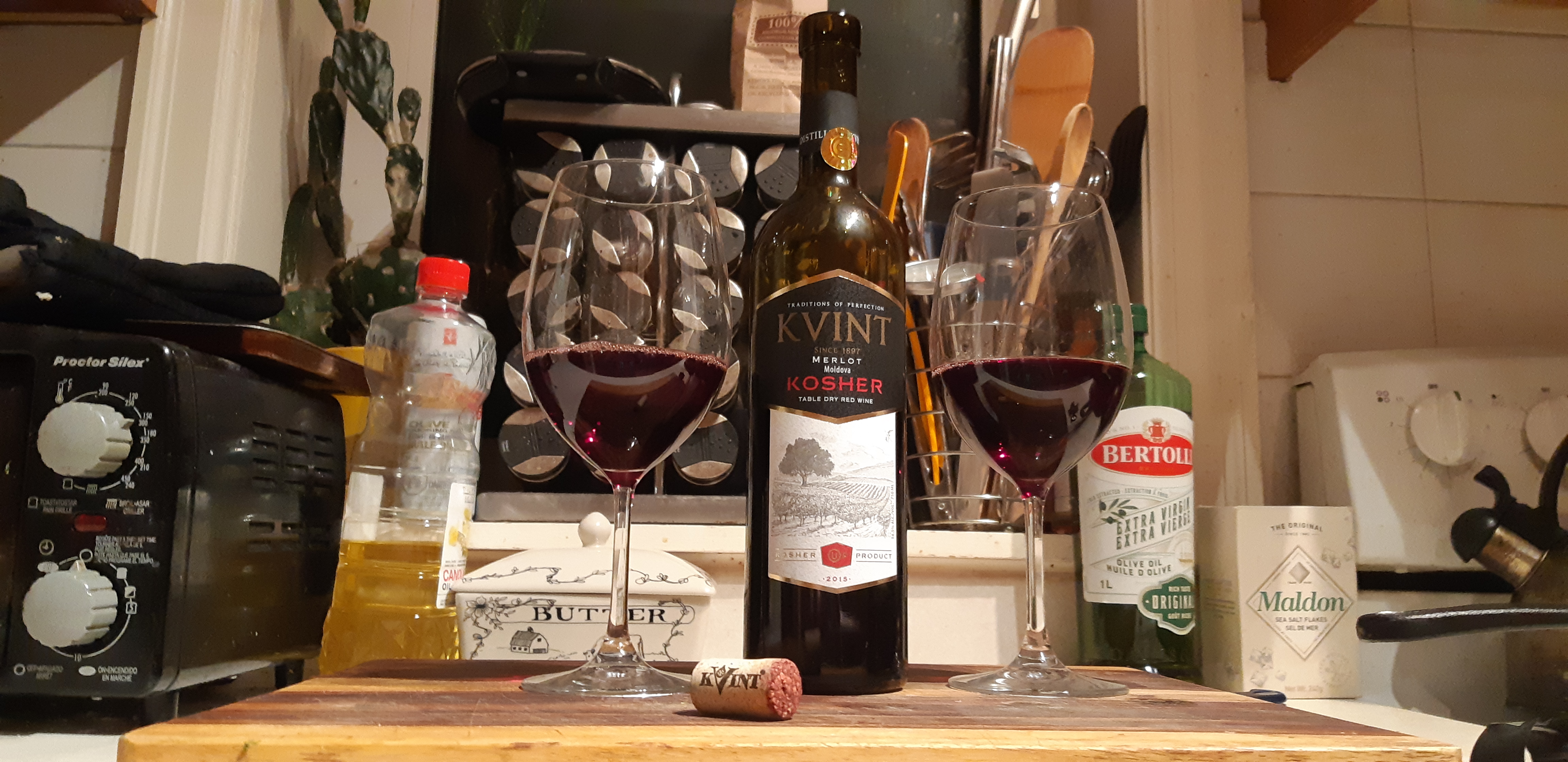
I know I’ve been really quiet in 2019. I’m still avoiding alcohol most of the time to keep my wallet and waistline under control, but it just wouldn’t be Passover if I didn’t try out some Kosher for Passover wines to help you better plan what to bring to your cousin’s Seder this weekend. I’ve gone really, really rogue on this one. Since I’ve already covered many of the VQA Kosher for Passover wines produced by Tzafona Cellars, I needed something new to write about. Huff Estates no longer seems to produce a Kosher wine, so I allowed myself the option of basically any Kosher for Passover product available in store at the LCBO. What a world of possibility.
This is how I found myself shlepping my sore tuchus one evening after work to the LCBO by Wilson station. Last year I had a successful time finding things to write about there, and the store’s proximity to the large Jewish community near Bathurst and Wilson could work in my favour. I already know that the two closest LCBO locations to my place only really stock Manischewitz, and the Wilson store is barely a detour on my way home from work. Barely. I still had to drag myself off the subway when I was ravenous with hunger and stare blindly at the decent sized kosher wine section until something spoke to me.
A bottle of Kvint Merlot Kosher 2015 spoke to me. I don’t know what the heck it was saying, but I was drawn in by the fact that it wasn’t a sweet wine, the affordable $14.10 price tag, and that it was produced in Moldova. I don’t know too much about Moldova, the former Soviet republic that sits landlocked between Romania and Ukraine. I’ve never had wine from Moldova before, so my expectations were basically non-existent for this wine. Kvint has been distilling spirits since 1897, and now grows more than 30 varieties of grapes. The vineyard produces both Kosher and regular wines, with the Kosher pasteurized production supervised under the control of the Union of Orthodox Jewish Congregations of New York. Since we share a border with New York State, I’m allowing it. Why not, it’s my website after all!
Unfortunately, this particular bottle had cork taint. If you’ve never smelled cork taint before, it overpowers many of the wine’s characteristics. A cross between sweaty hockey equipment, damp basement and wet dog, and impacts about 2-3% of all wine. Wrap your brain around that for a bit. It’s safe to drink, but oh boy is it disappointing to encounter. Still, I tried to sniff beyond the cork taint to see what underlying characteristics this wine had. And then I made Kole sniff it a whole bunch, as he hasn’t encountered as many corked wines yet in his day.
Appearance: Light-medium ruby colour, very pale looking for Merlot. Looked more like some Pinot Noirs I’ve tried. Youthful, watery rim.
Aroma: Red cherries, raspberries, tobacco, unripe strawberries could all be detected underneath the musty cardboard hallmark of cork taint.
Palate: Dry on the palate, tannins had a sandy texture. Black pepper, red plum, unripe strawberries, and of course… cork.
Acidity: Medium plus acid.
Body: Light body despite a high alcohol content of 14.5%. Definitely felt the alcohol burn from this one.
Aftertaste: Wet dog.
Suggested food pairings: Bitter herbs, roasted beets, roasted chicken, or the third bottle of wine of the night when the Seder is dragging on a bit longer than you’d like, and Bubby is asking for great-grandchildren.
Overall: It’s hard to evaluate the quality of a corked wine. I’d spend a bit more next time for a better-known producer. Italy, France, Australia, and Israel all have amazing Kosher wine options that won’t break the bank – I’ll have to check those out next year. Or else some other producers in Ontario will need to start offering a Kosher for Passover VQA wine.
- The 8 Beers of Chanukah 2020 Night 8: Zane Lost His Avocado Bag Brut IPA by Refined Fool Brewing Company - December 17, 2020
- The 8 Beers of Chanukah 2020 Night 7: Roam Hazy IPA by Market Brewing Company - December 16, 2020
- The 8 Beers of Chanukah 2020 Night 6: Omnipollo Bianca Mango Gose - December 15, 2020
